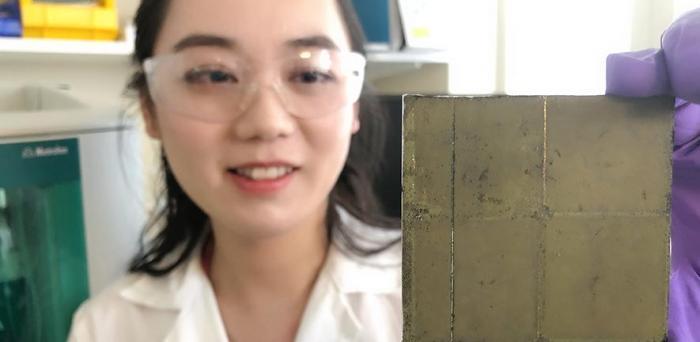The device, developed by a team from the University of Cambridge, is a significant step toward achieving artificial photosynthesis – a process mimicking the ability of plants to convert sunlight into energy. It is based on an advanced ‘photosheet’ technology and converts sunlight, carbon dioxide and water into oxygen and formic acid – a storable fuel that can be either be used directly or be converted into hydrogen.
The results, reported in the journal Nature Energy, represent a new method for the conversion of carbon dioxide into clean fuels. The wireless device could be scaled up and used on energy ‘farms’ similar to solar farms, producing clean fuel using sunlight and water.
Harvesting solar energy to convert carbon dioxide into fuel is a promising way to reduce carbon emissions and transition away from fossil fuels. However, it is challenging to produce these clean fuels without unwanted by-products.
“It’s been difficult to achieve artificial photosynthesis with a high degree of selectivity, so that you’re converting as much of the sunlight as possible into the fuel you want, rather than be left with a lot of waste,” said first author Dr Qian Wang from Cambridge’s Department of Chemistry.
“In addition, storage of gaseous fuels and separation of by-products can be complicated – we want to get to the point where we can cleanly produce a liquid fuel that can also be easily stored and transported,” said Professor Erwin Reisner, the paper’s senior author.
In 2019, researchers from Reisner’s group developed a solar reactor based on an ‘artificial leaf’ design, which also uses sunlight, carbon dioxide and water to produce a fuel, known as syngas. The new technology looks and behaves quite similarly to the artificial leaf but works in a different way and produces formic acid.
While the artificial leaf used components from solar cells, the new device doesn’t require these components and relies solely on photocatalysts embedded on a sheet to produce a so-called photocatalyst sheet. The sheets are made up of semiconductor powders, which can be prepared in large quantities easily and cost-effectively.
Reproduced courtesy of the University of Cambridge
